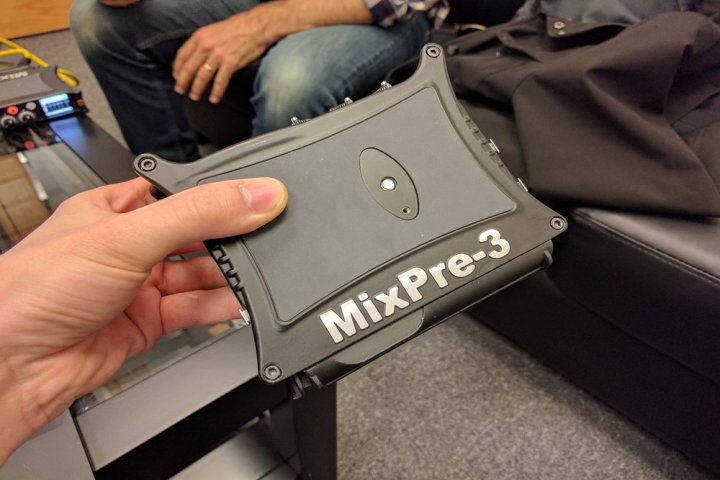
It marks the first time Sound Devices has targeted the wider consumer market. “Our new Sound Devices MixPre Series is the culmination of decades of experience designing products for the best-of-the-best in the professional audio industry,” Matt Anderson, CEO of Sound Devices, said in a statement. “Our mic preamps simply have to be heard to be believed, whether micing drums, birds, or dialog, using condenser, dynamic, or ribbon mics, the finest textures of the audio are preserved.”
The MixPre Series, which consists of a high-end MixPre-6 and MixPre-3, doesn’t look like much, but there is more to them than meets the eye. The six-inch-thick aluminum die-cast bodies, which Sound Devices claims are “some of the smallest in their class,” pack three LED-illuminated fader knobs, up to six XLR inputs for Musical Instrument Digital Interface (MIDI) devices (like keyboards and synthesizers), and 3.5mm auxiliary ports for powered mics and headphones. Recordings are stored on an SD/SDHC/SDXC card or streamed to a computer via one of two USB ports, the real-time levels of which can be viewed — and adjusted — from a color IPS touchscreen.

Under the hood, the MixPre Series sports custom circuits that record, mix, and stream sound in real time. State-of-the-art Kashmir mic pre-amplifiers with analog limiters minimize distortion, and a 32-bit audio-to-digital converter streams sound up to 192kHz. An automatic timecode feature syncs video piped through the devices’ HDMI-in with recorded dialogue, and standard AA batteries (or an optional Li-Ion battery sled supply) supply power.
Sound Devices is positioning the MixPre as an alternative to high-end recorders. Both models come with a basic mode that offers no-frills recording modes for videos, podcasts, interviews, and music. Experts can tap into advanced mode, which unlocks multichannel recording and settings.
Many of those settings can be adjusted from Wingman, Sound Device’s app for iOS, via Bluetooth Smart. You can start and stop recordings, enter and edit metadata, and rename tracks from a connected iPhone or iPad.

The differences between the devices come down to inputs and outputs, mainly. The MixPre-3 offers up to 5-in/2-out USB audio interface with three discrete mic preamps, the ability to stream up to three analog inputs (including three high-quality mic inputs), and a two-channel mix over USB. The MixPre-6, on the other hand, offers up to 8-in/4-out USB audio interface with four mic preamps, and streams up to six analog inputs (including four high-quality mic inputs), a two-channel mix over USB, and an XLR 1/4-inch combo inputs that allow 1/4-inch line-input sources to be connected directly.
The MixPre-3 and MixPre-6 go for $650 and $900, respectively.


